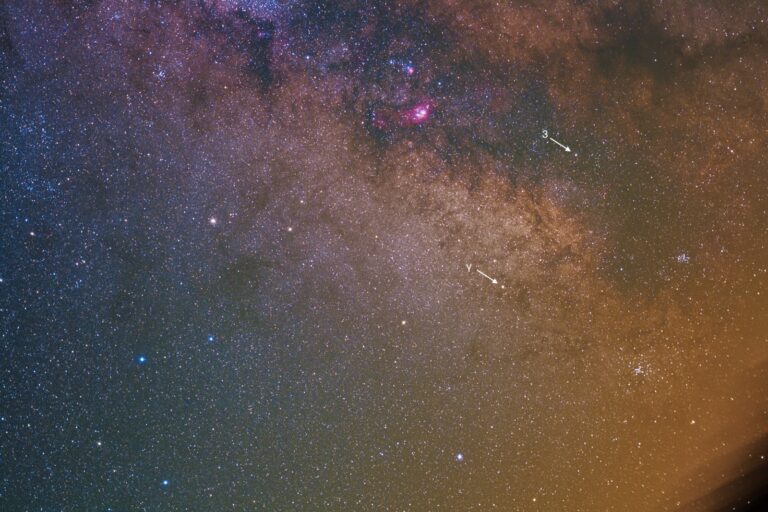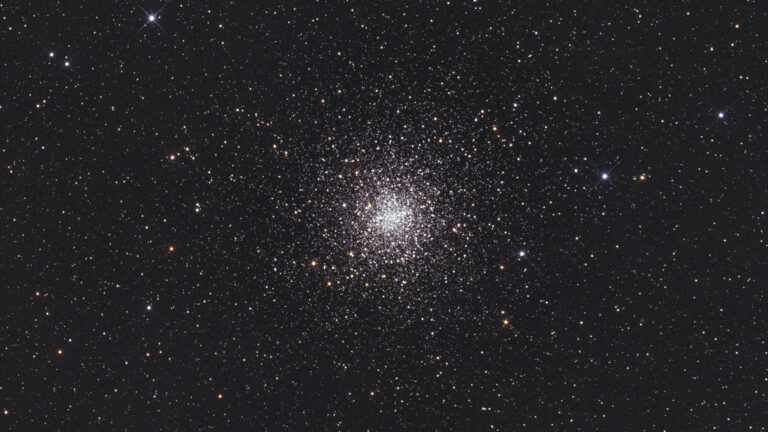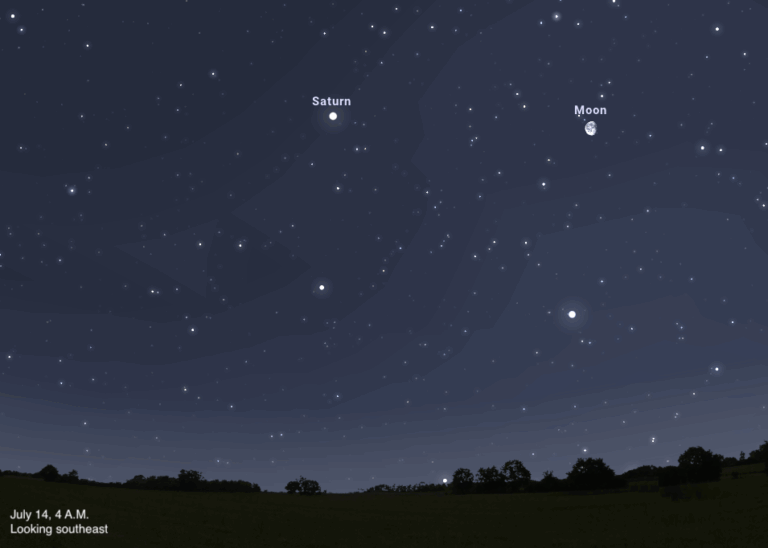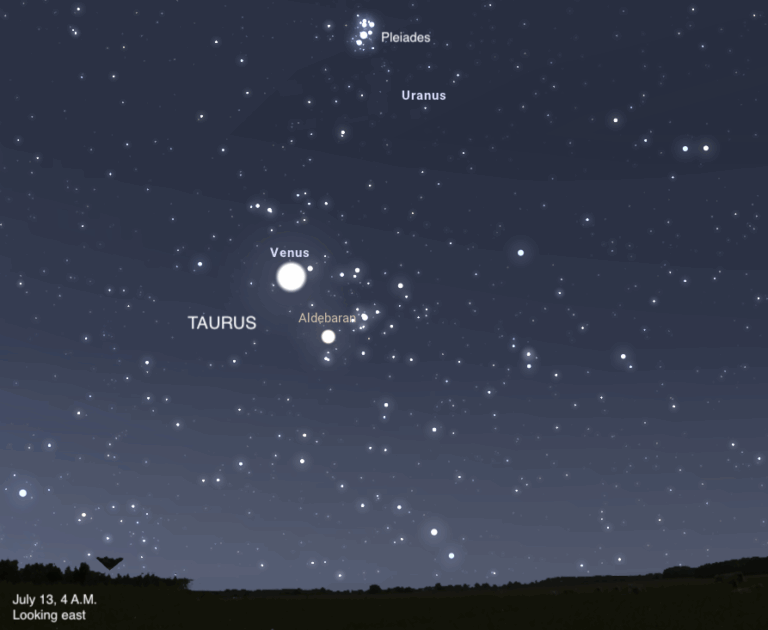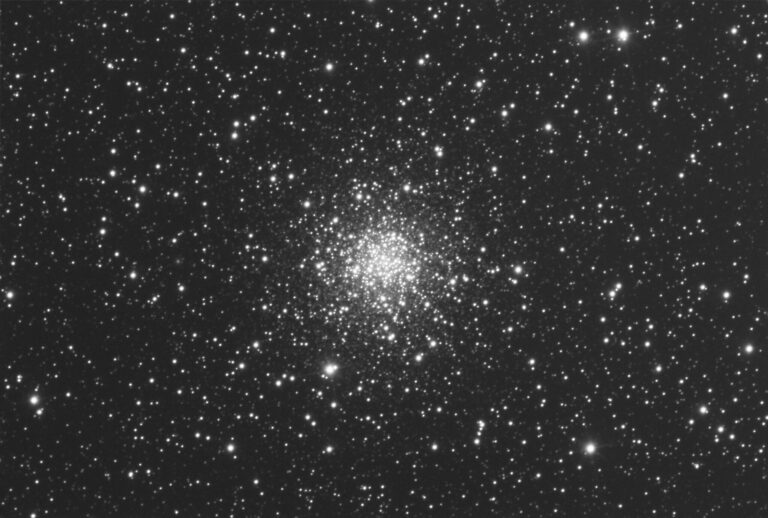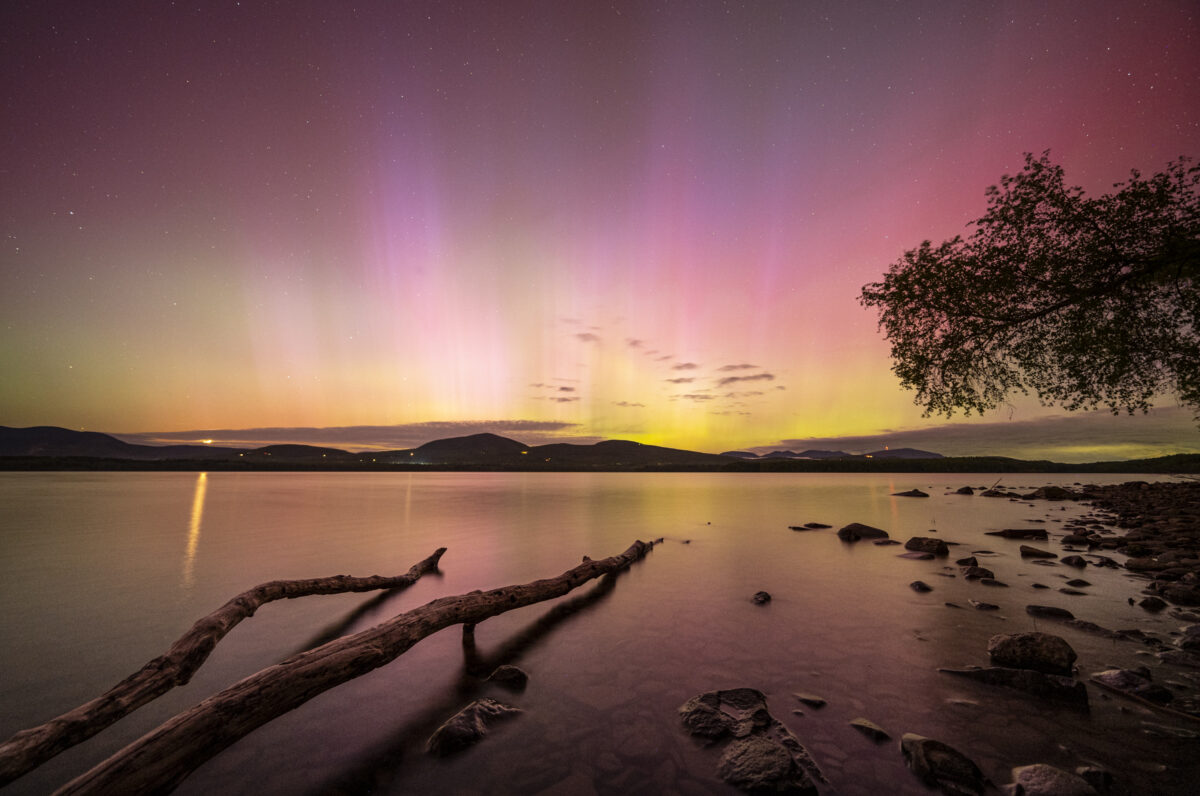
Key Takeaways:
On Oct. 8, an X-class solar flare gave rise to a coronal mass ejection (CME) that erupted from the surface of the Sun, racing toward Earth at 1.5 million mph (2.4 million km/h). It arrived at Earth at 11:15 a.m. EDT today, Oct. 10. At 12:57 p.m. EDT, the U.S. Space Weather Prediction Center (SWPC) reported that the geomagnetic storm triggered by the CME had reached G4 status — the second highest level.
SWPC expects strong auroral shows tonight. Aurorae are expected across the northern U.S., and could be seen as far south as Alabama.
The aurora’s dazzling light display happens when charged particles from the Sun slam into Earth’s upper atmosphere, igniting a geomagnetic storm. The so-called northern and southern lights are most often visible near Earth’s poles because our magnetosphere — the global magnetic field generated by our spinning planet’s liquid metal interior — funnels them there. But when solar storms strike Earth with enough strength — like today — the aurora can be seen far beyond the poles.
Sour side of storms
Such intense geomagnetic activity can cause other, less savory effects. Communications signals that must pass through the upper atmosphere are subject to distortion and can become unreliable. This includes GPS and many global systems used for shipping. The charged particles and high energy levels can damage satellites themselves. With warning, many satellites can be put into standby modes; without it, strong enough solar weather can be devastating.
Aviators can also be affected by disruptions to radio communications. As of 12:45 UTC on Oct. 10, the International Civil Aviation Organization was reporting severe impacts on high-frequency radio communications at high latitudes, potentially impacting long-haul flights.
On the ground, the influx of energy into Earth’s geomagnetic system can strain power grids. The National Oceanic and Atmospheric Administration (NOAA), warns that systems already weakened by recent hurricanes Helene and Milton may be particularly at risk, and is actively working with the North American power grid to mitigate disruptions.

Cycle of storms
The current solar watch comes six months after another news-making auroral display. In May, a G4 watch turned into a G5 event, as aurorae lit the skies worldwide from east to west, as far south as Puerto Rico, and as far north (for the southern lights, or aurora australis) as southern Brazil.
The activity is somewhat expected, as our Sun is near the peak of its 11-year cycle, but this year has been especially dramatic. Added to that, solar cycles are irregular, lasting anywhere from 9–14 years, and are inconsistent in how quiet or dramatic the Sun’s changes are. The current cycle is designated Cycle 25, and was originally expected to peak in 2025. But in December 2023, SWPC updated their forecast, predicting a peak in 2024.
At an Oct. 9 press conference, SWPC scientists said the timing is still uncertain; we may have already reached the peak of this cycle, or it may strengthen until 2025. The previous Cycle 24 was the weakest in 100 years, so it has been decades since such strong, recurrent solar activity has been observed.
Solar weather, like regular weather, can be unpredictable. NOAA uses a watch/warning system akin to terrestrial storm systems. A watch is a prediction based on data constantly flowing from a fleet of solar observatories. A warning is issued once that solar weather arrives at Earth. SWPC issued a G4-level watch on Oct. 9, and will update as the situation evolves at www.spaceweather.gov.
How to spot them
To look for the aurora in your skies, find the darkest spot you can, even if that’s your backyard with the house lights off. Aurorae often look like curtain-shaped clouds, flickering or shifting in a non-cloud way. Colors, unless the aurorae are truly spectacular, usually require photography to appear. But a simple phone camera (in night mode, if possible) can work — and will frequently reveal aurorae that may not be visible to the naked eye.


